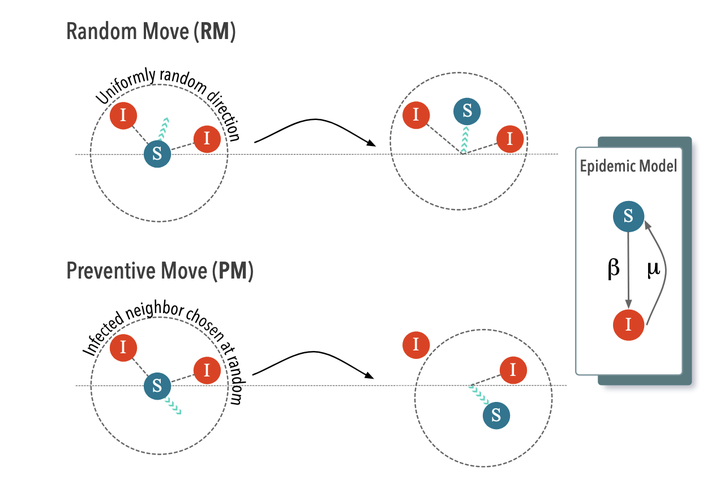 Schematic representation of the mobility and epidemic models. A susceptible (S) agent can either perform a random move (RM) to a direction chosen at random, or a preventive move (PM), in which it chooses one of its infected neighbors (if more than one is present) and moves away from it.
Schematic representation of the mobility and epidemic models. A susceptible (S) agent can either perform a random move (RM) to a direction chosen at random, or a preventive move (PM), in which it chooses one of its infected neighbors (if more than one is present) and moves away from it.Abstract
Despite the advanced stage of epidemic modeling, there is a major demand for methods to incorporate behavioral responses to the spread of a disease, such as social distancing and adoption of prevention methods. Mobility plays an important role on epidemic dynamics and is also affected by behavioral changes, but there are many situations in which real mobility data is incomplete or inaccessible. We present a model for epidemic spreading in temporal networks of mobile agents that incorporates local behavioral responses. Susceptible agents are allowed to move towards the opposite direction of infected agents in their neighborhood. We show that this mechanism considerably decreases the stationary prevalence when the spatial density of agents is low. However, for higher densities, the mechanism causes an abrupt phase transition, where a new bistable phase appears. We develop a semi-analytic approach for the case when the mobility is fast compared to the disease dynamics, and use it to argue that the bistability is caused by the emergence of spatial clusters of susceptible agents. Finally, we characterize the temporal networks formed in the fast mobility regime, showing how the degree distributions and other metrics are affected by the behavioral mechanism. Our work incorporates results previously known from adaptive networks into population of mobile agents, which can be further developed to be used in mobility-driven models.